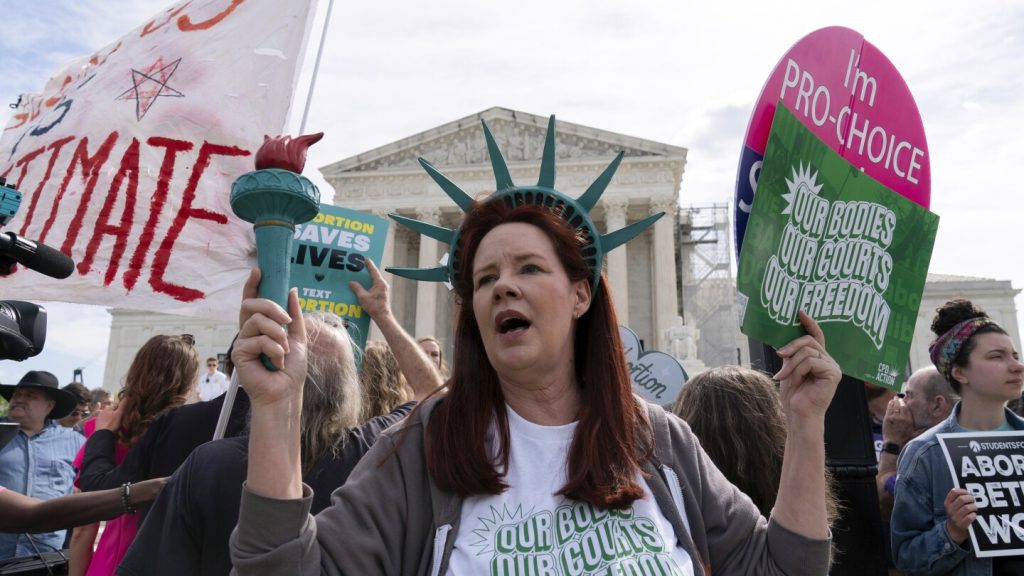Election officials in Nevada are reviewing signatures to see if there are enough to put an abortion rights constitutional amendment before voters in November, part of a national push to pose abortion rights questions to voters since the U.S. Supreme Court removed the nationwide right to abortion. Since the court’s 2022 ruling, most Republican-controlled states have new abortion restrictions in effect, including 14 that ban it at every stage of pregnancy. Most Democratic-led states have laws or executive orders to protect access. Additionally, voters in seven states have sided with abortion rights supporters on ballot measures. It’s not clear yet how many states will vote on measures to enshrine abortion access in November. In some, the question is whether amendment supporters can get enough valid signatures. In others, it’s up to the legislature. And there’s legal wrangling in some states.
Some efforts that sought to restrict or ban abortion have also failed to reach ballots. In Wisconsin, the House approved a measure asking voters to ban abortion after 14 weeks, but the legislative session ended without a vote from the state Senate. Likewise, Iowa lawmakers ended their session without approving a measure asking voters to find that there’s no constitutional right to abortion. Pennsylvania lawmakers previously pursued a similar amendment, but it’s not expected to be added to the ballot this year. A Louisiana measure to enshrine abortion rights in the state constitution died in committee, one in Maine effectively died when it fell short of receiving the approval of two-thirds of the House and a Minnesota measure was not passed by lawmakers, either.
In Colorado, a measure to enshrine abortion protections into the state constitution has made the ballot for the fall election. Supporters gathered over 225,000 signatures, nearly double the requirement, and the measure requires support of 55% of voters to pass. However, a dueling measure to ban abortion did not turn in signatures. In Florida, the state Supreme Court ruled that a ballot measure to legalize abortion until viability could go on the ballot, despite a legal challenge from the state Attorney General. Advocates collected nearly a million signatures for a state constitutional amendment to legalize abortion until viability, surpassing the required amount. In Maryland, voters will also be asked to enshrine the right to abortion in the state’s constitution, where abortion is already allowed until viability.
South Dakota voters will decide on a measure this fall that would ban any restrictions on abortion in the first trimester of pregnancy, with some regulations in the second trimester and exceptions in the third trimester. A measure in Arizona seeks to add a constitutional right to abortion, prohibiting bans until viability and allowing later abortions for the health of the pregnant person. Similarly, Arkansas proponents are gathering signatures for an amendment to allow abortion in many cases, barring bans in the first 20 weeks of gestation and allowing for abortions later in pregnancy under certain circumstances. In Missouri, abortion rights advocates have submitted signatures for a measure to approve a constitutional amendment guaranteeing abortion until viability. Montana abortion rights proponents are proposing a constitutional amendment to protect abortion rights before viability or when necessary to protect the pregnant person’s life or health. Nebraska and New York are also looking at potential ballot measures related to abortion rights.
Overall, the push for abortion rights ballot measures reflects the ongoing debate and legal battles surrounding access to abortion in the United States following the Supreme Court’s 2022 ruling. As states take various approaches, from enshrining rights to restricting access, voters in different states will have the opportunity to weigh in on the issue in the upcoming November elections. From Colorado to Florida to New York, the landscape of abortion rights and restrictions is evolving, with advocates on both sides of the issue working to secure support for their respective positions. It remains to be seen how each state will ultimately decide on these critical reproductive health issues.


